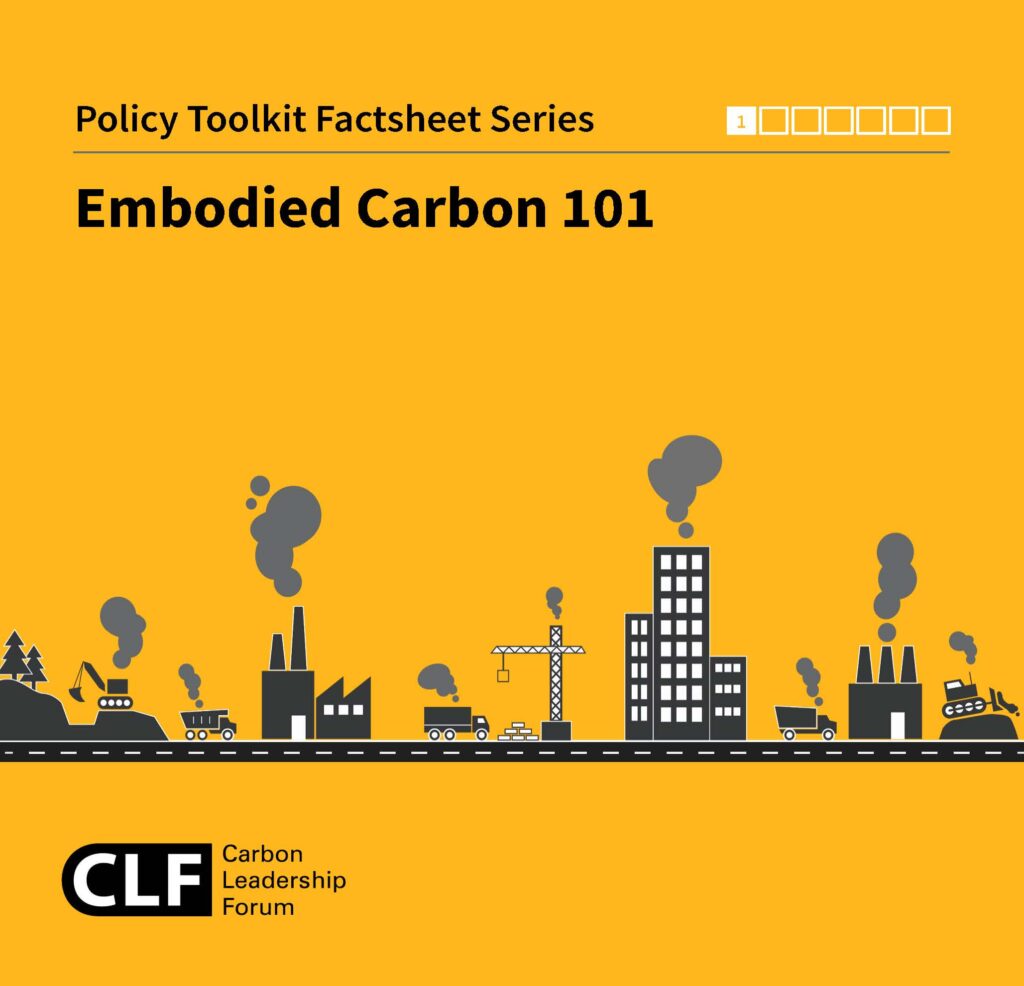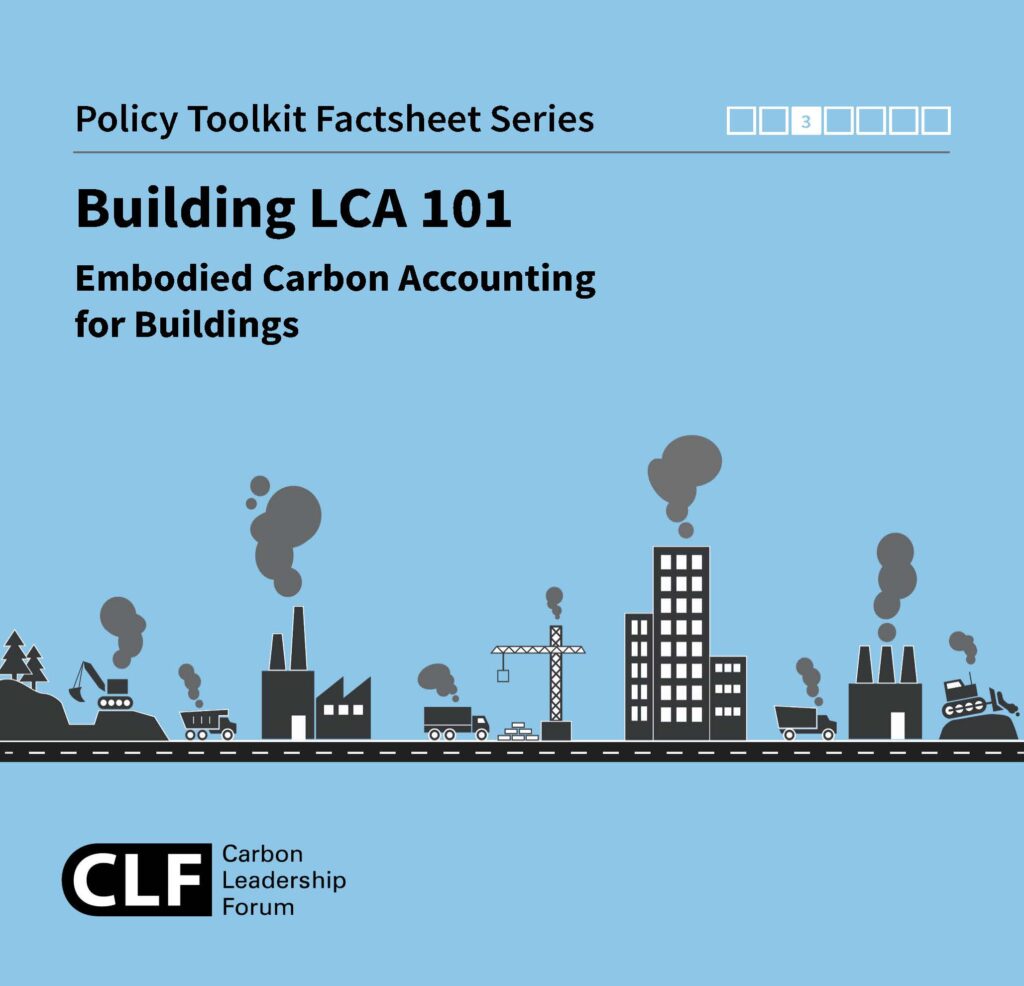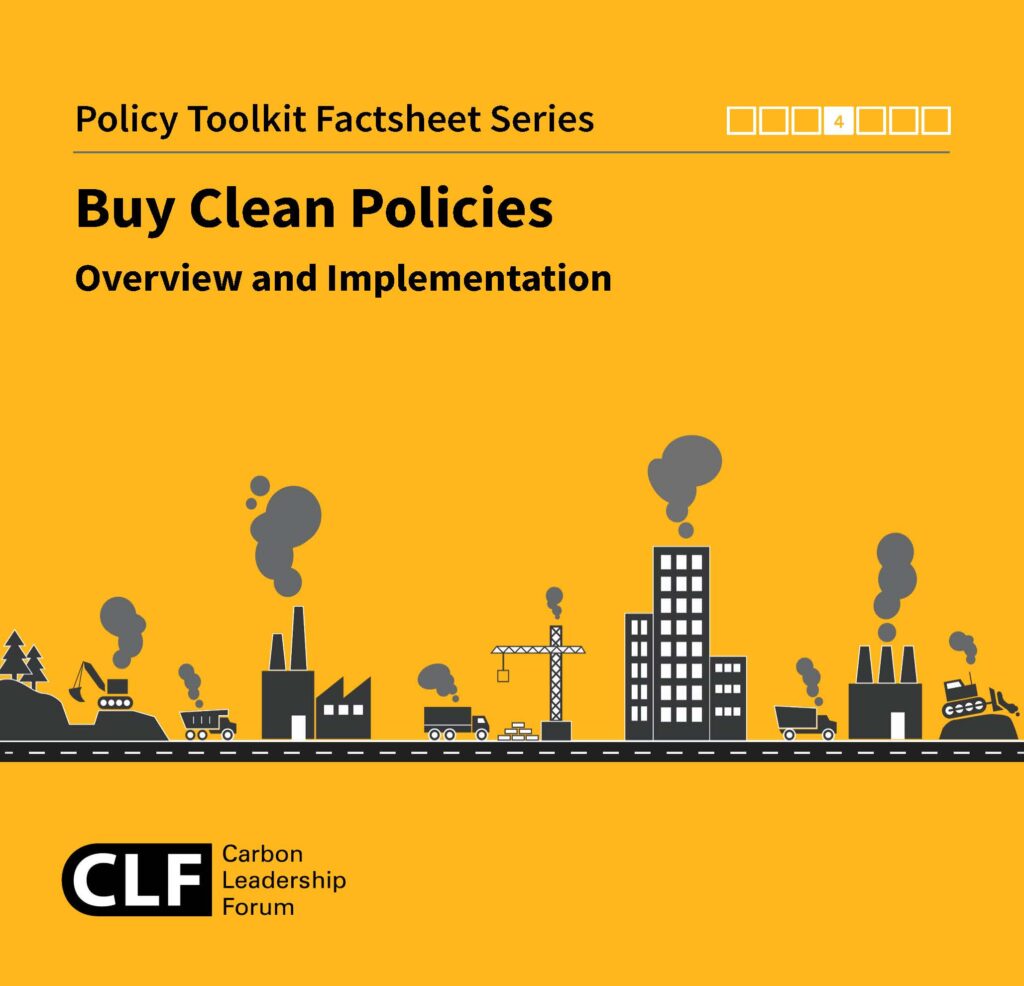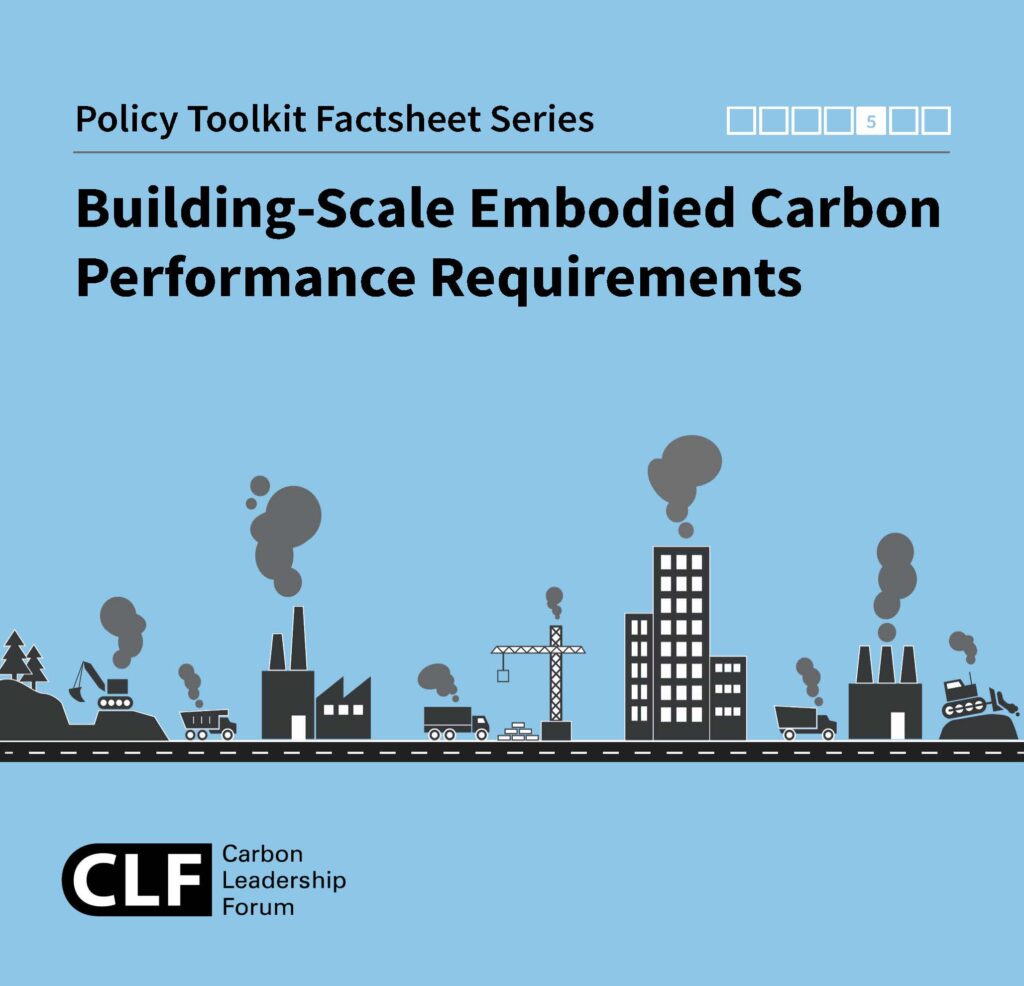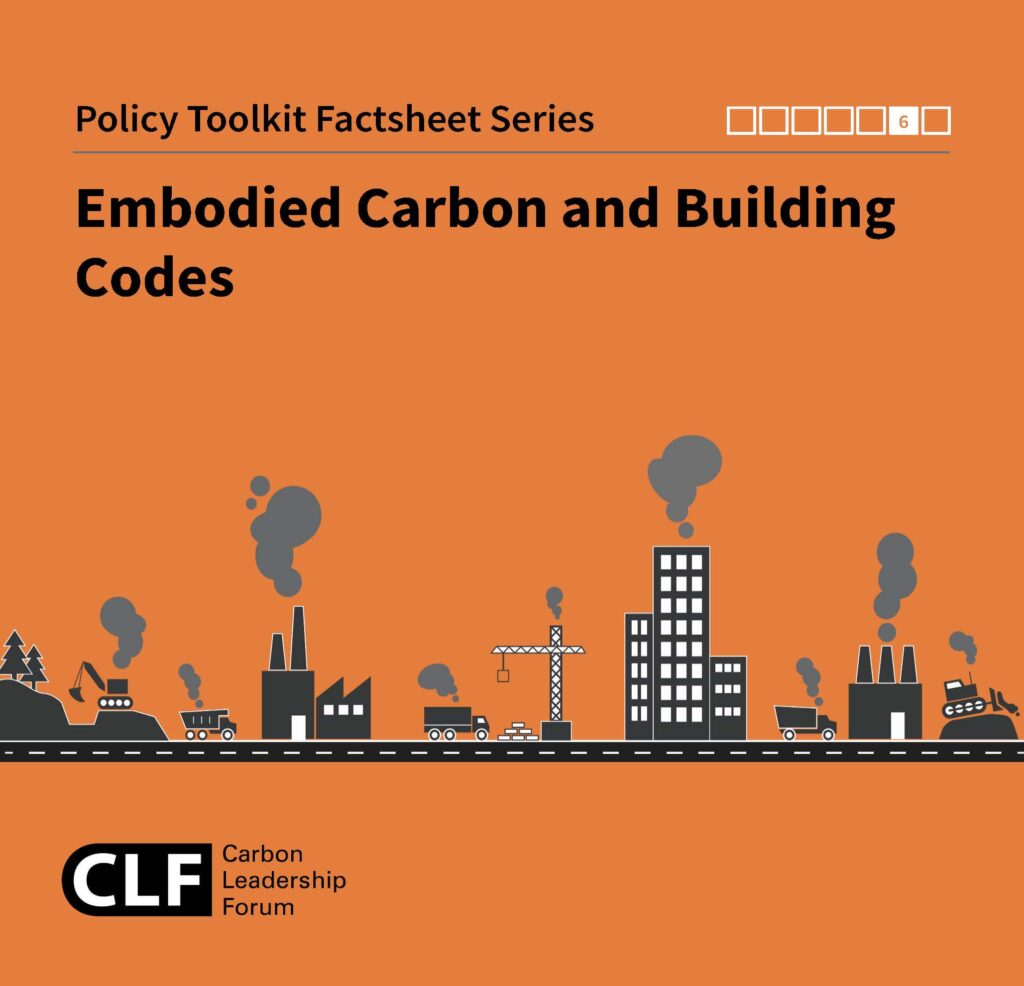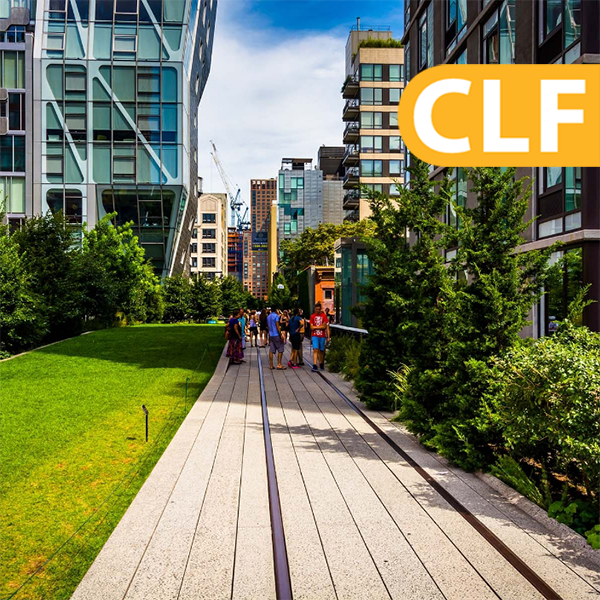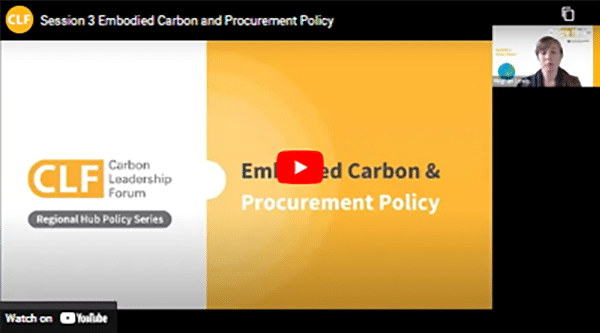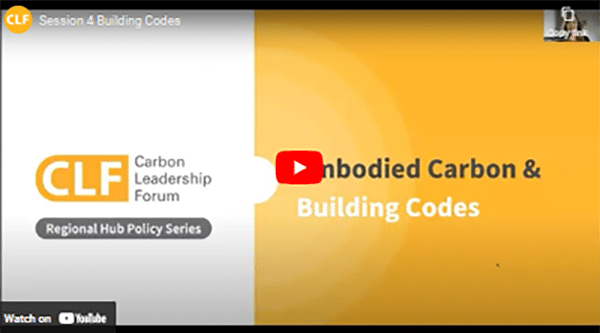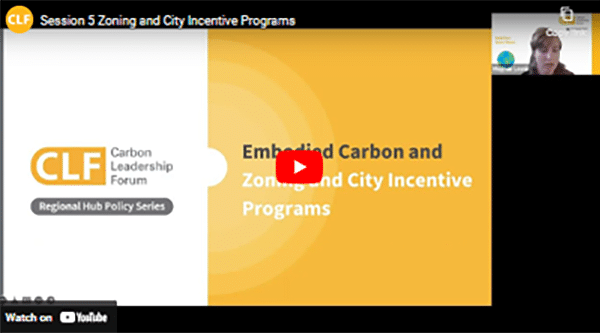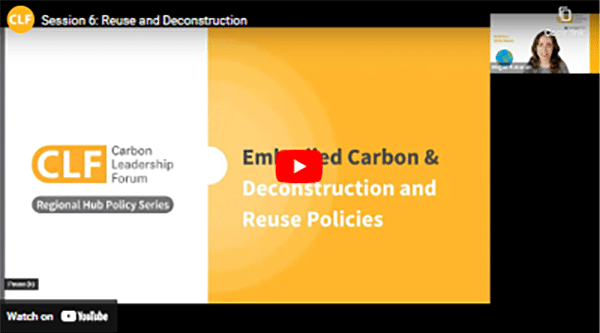Policy is an essential step towards creating the scale of action required to rapidly reduce embodied carbon in construction.
The Embodied Carbon Policy Toolkit is a collection of resources designed to provide policymakers with tools to understand the current landscape of embodied carbon policy and to support the crafting of policies to radically reduce embodied carbon in buildings and infrastructure.
The Policy Toolkit includes:
Policy Factsheets – concise introductory resources written for policymakers, on the following policy categories:
- Embodied Carbon 101
- EPD 101
- Building LCA 101
- Buy Clean Policies: Overview & Implementation
- Building Embodied Carbon Performance Requirements
- Embodied Carbon and Codes
- Deconstruction, Salvage, and Reuse Policies
Policy Tracking Map – tracks existing and proposed embodied carbon policies across the globe
Policy Reports & Case Studies – Collection of all CLF-published reports, case studies and other policy-related resources.
Policy Introductory Video Series – Six videos designed to be used by regional Hubs to provide policy training, providing details on core embodied carbon policy concepts and frameworks, and case studies of existing policies.
For questions regarding the CLF Embodied Carbon Policy Toolkit resources, email us or join a Carbon Leadership Forum Regional Hub to connect with other interested professionals in your region or city.
Scroll down to find additional resources from the Carbon Leadership Forum

Policy Resources
Policy Factsheets
Policy Tracking Map
Embodied carbon policies are spreading rapidly across the United States and the world. Click on the map markers below to learn more about existing and proposed policies. For more information about the individual policies, click on the headline for each policy.
View Embodied Carbon Policy Tracking Map in a full screen map
